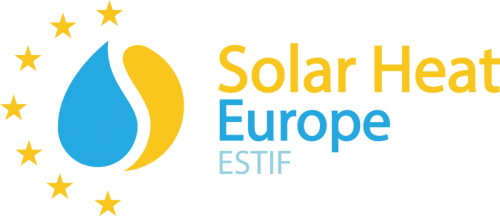Solar Heat in Building Sector
 Heating and cooling account for 85% of total final energy use in European households. The majority is used in space heating for residential and commercial buildings, and providing hot water. The building sector remains therefore the main challenge in the decarbonization of the H&C sector.
Heating and cooling account for 85% of total final energy use in European households. The majority is used in space heating for residential and commercial buildings, and providing hot water. The building sector remains therefore the main challenge in the decarbonization of the H&C sector.
The Energy Performance of Buildings Directive (EPBD) requires that from the year 2020 onwards all new buildings will have to be ‘nearly zero energy buildings’ (NZEB), which means reducing the energy demand to the cost-optimal level of 2020, while the very low amount of remaining energy demand in a NZEB should be covered to a ‘very significant extent’ by energy from renewable sources, including energy from renewable sources produced on-site or nearby. For public buildings these standards need to be met by the end of 2018.
As a transitional measure towards the 2020 NZEB requirements, the EPBD introduced the obligation to set minimum energy performance requirements with the view to achieving cost-optimal levels, that is the level of energy performance that leads to the lowest cost during the estimated lifecycle, defined at Member State level, according to a cost-optimal methodology set to facilitate the setting of similar ambition across countries. The cost optimal methodology takes into account, among other things, the positive contribution of solar thermal and other renewable energy sources to the energy performance of a building.
Regarding renewable energy in buildings, the Renewable Energy Directive requires integrating renewable energy use in all new or renovated buildings, thus complementing the EPBD NZEB definition of a ‘very significant extent’.
A specific way to promote the use of solar thermal in buildings are solar ordinances or obligations. Solar ordinances are regulations requiring that solar energy provides a minimum share of the heating demand. Usually, they apply to new buildings, those undergoing major refurbishment and sometimes when the heating system is being replaced. Solar obligations have been adopted in a number of countries, regions and local authorities in Europe and beyond. Solar obligations are probably the single most powerful tool for promoting the use of renewables in new buildings. Practical experience shows their numerous benefits. However, solar obligations fundamentally change the way in which the solar thermal market grows and customers will often search for the cheapest possible solution. Therefore, solar obligation must include appropriate quality assurance measures.
